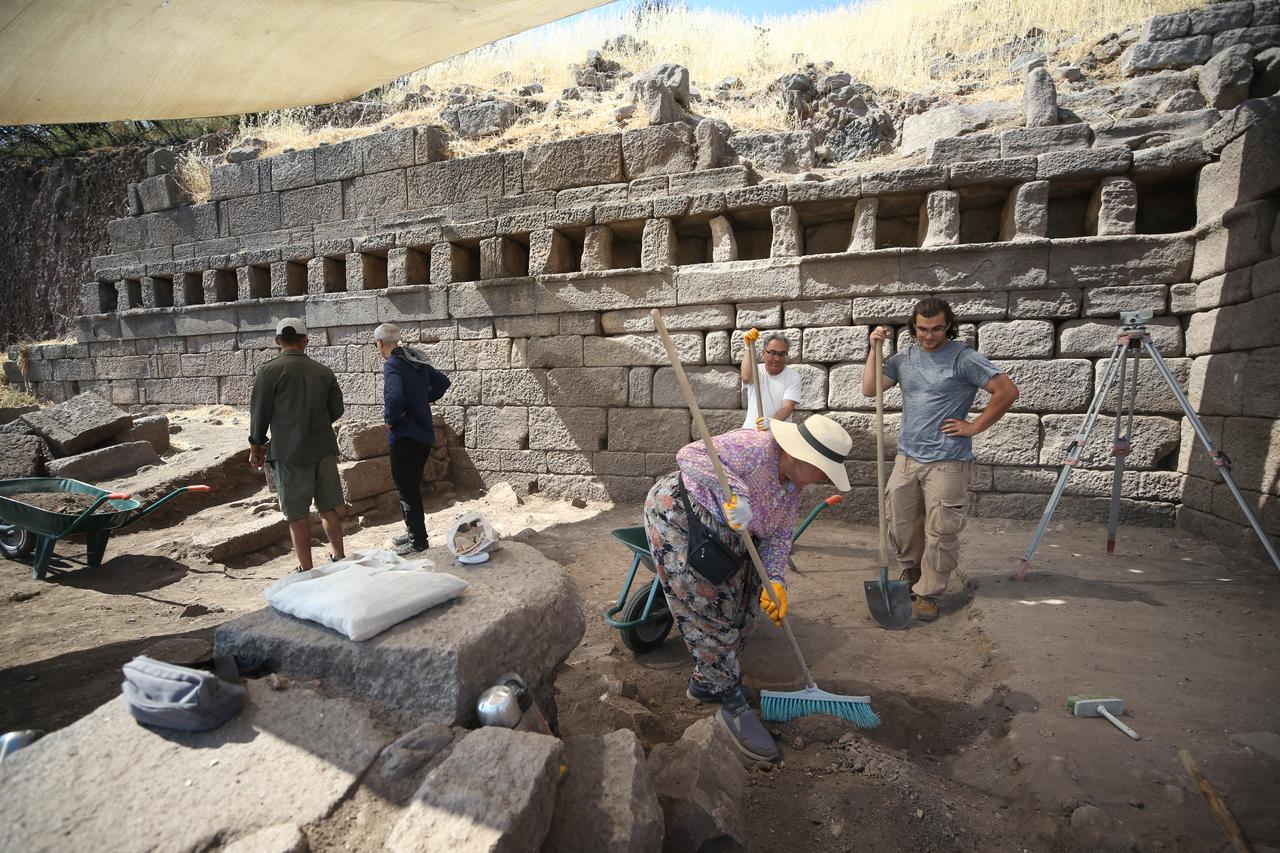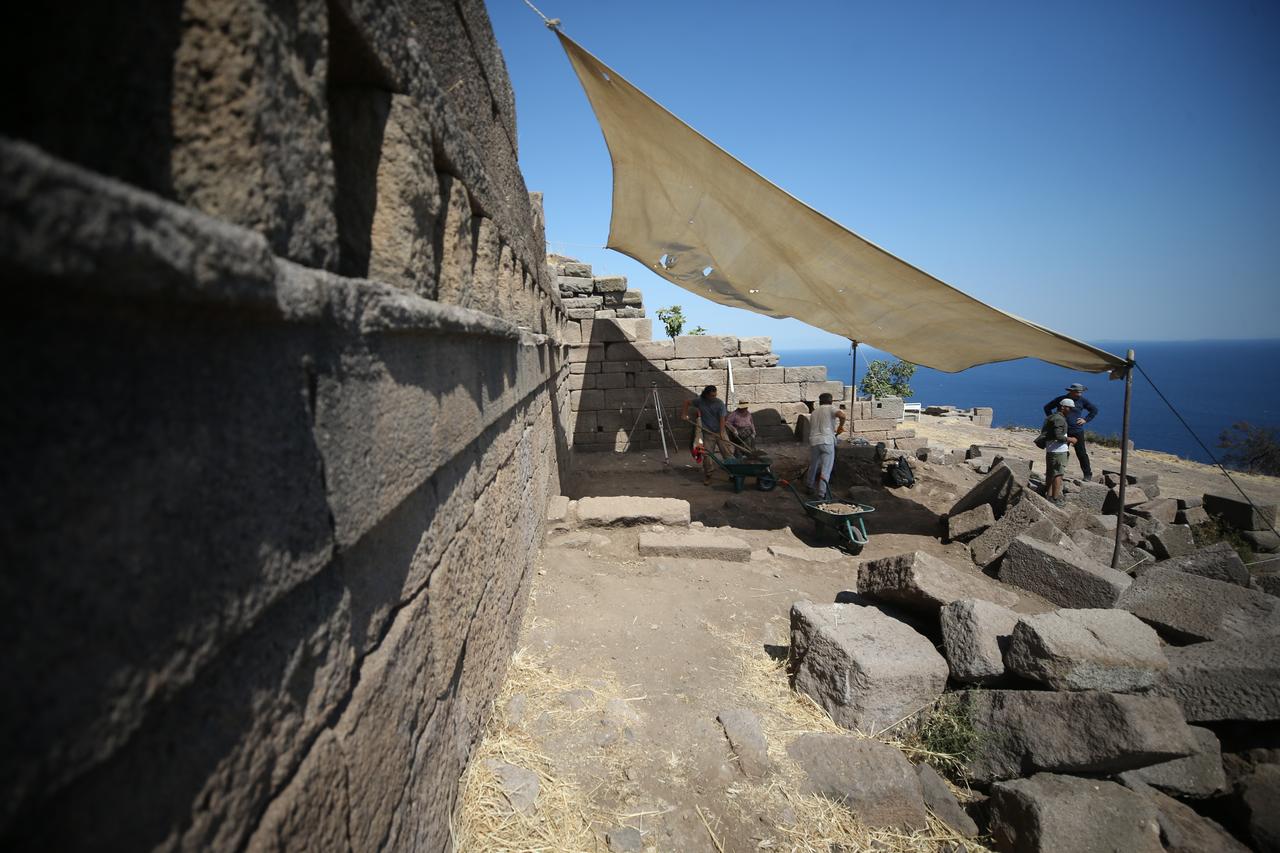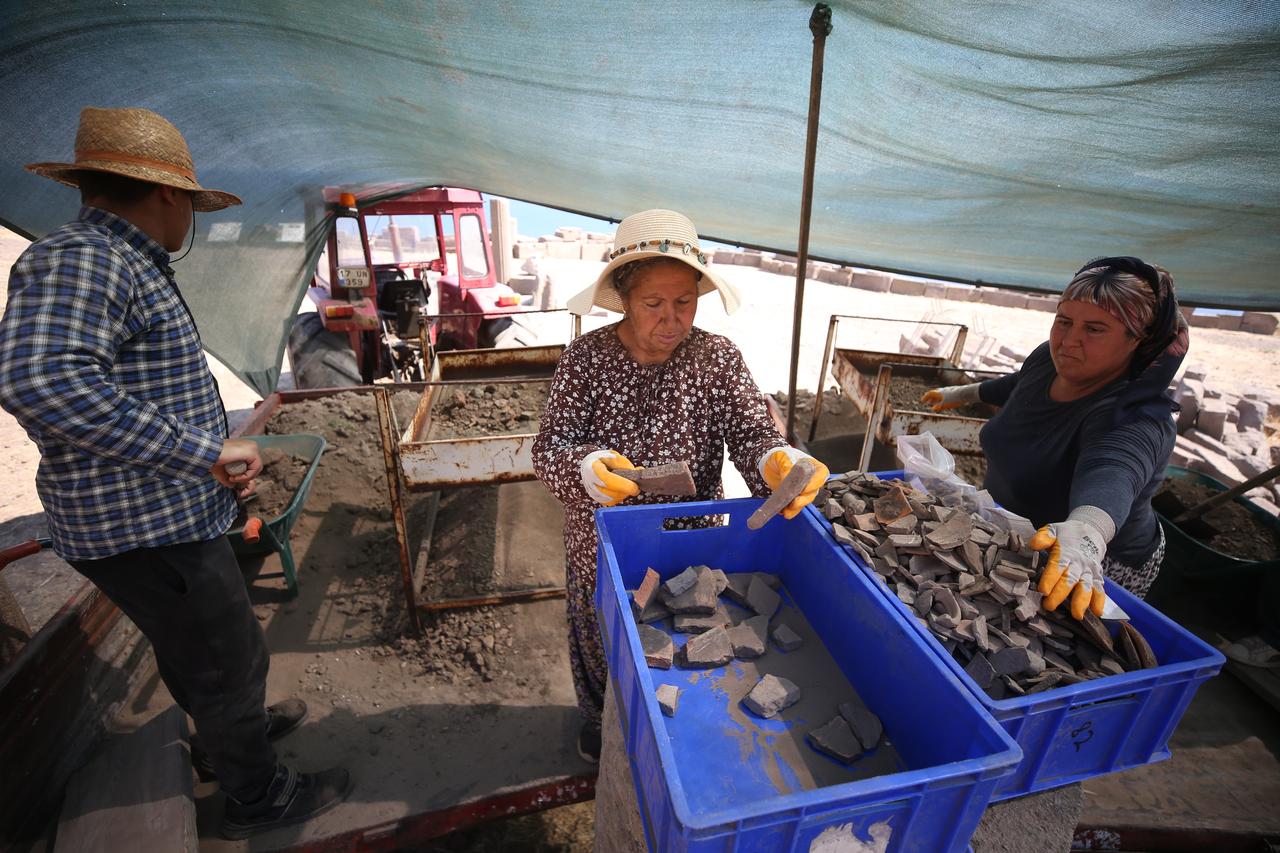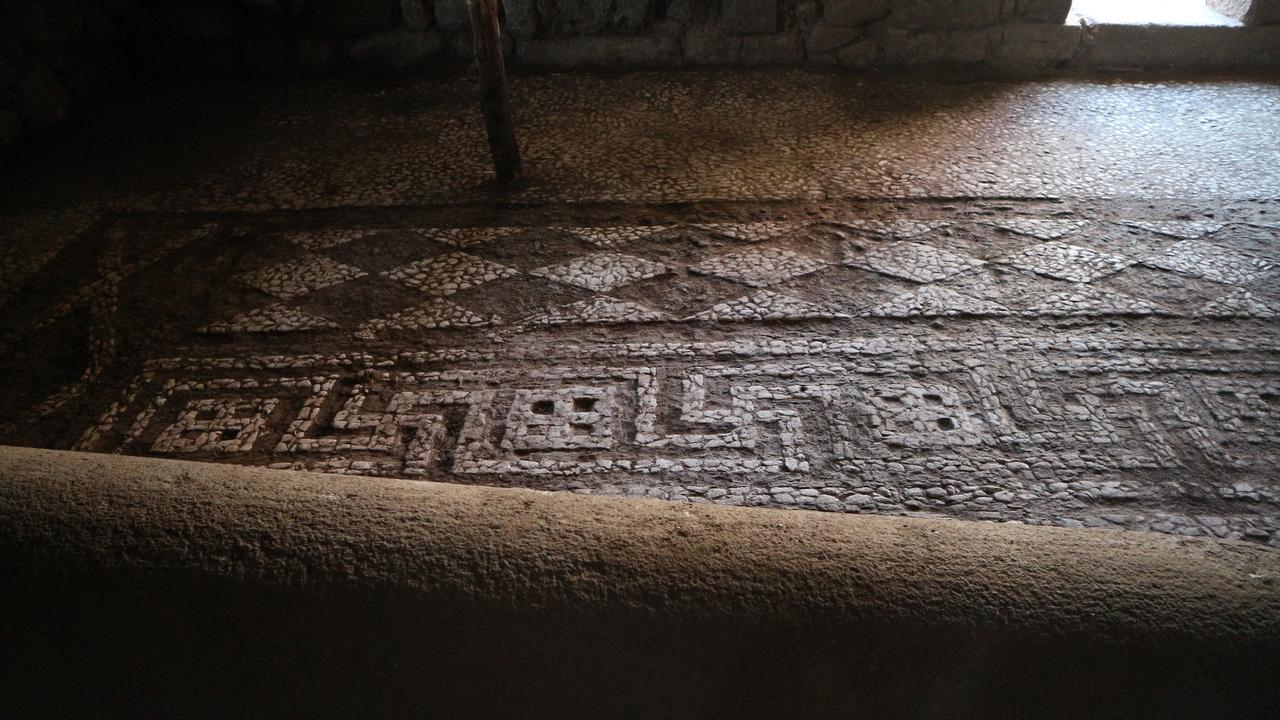
Archaeologists have brought to light a 3,500-year-old stoa in the ancient port city of Assos, located in Türkiye’s northwestern Canakkale province. The uncovered section of the structure, measuring approximately 110 meters, is believed to reflect the distinctive architectural techniques of the Hellenistic-era Pergamon kings.
The archaeological site sits in the village of Behramkale in the Ayvacik district and overlooks the Aegean island of Lesbos. Established on volcanic terrain in the ancient region of Troas, Assos has been inhabited by various civilizations and continues to attract visitors due to its well-preserved historical remains and scenic surroundings.

Excavations at Assos began in the late 19th century and resumed in 1981, continuing without interruption. Now in its 44th season, the project is led by Turkish archaeologists from Canakkale Onsekiz Mart University, under the direction of the Culture and Tourism Ministry and with primary sponsorship from ICDAS, one of Türkiye’s major industrial firms.
Work is ongoing throughout the year, depending on weather conditions. The current focus is on the eastern section of the northern stoa located in the city’s agora—the ancient marketplace. According to the head of the excavation team, Nurettin Arslan, this two-story structure stands out due to its architectural connection to Pergamon royalty.
“What makes this stoa special is that it reflects the architectural style the Pergamon kings introduced during the Hellenistic period to showcase their unique approach,” Arslan stated. He explained that the sloped topography of the site required ancient engineers to adopt innovative design strategies to create such expansive, multi-level spaces.

While the building’s full length spans 110 meters, only part of it has been uncovered so far. Excavation of the western section had been completed in previous years. This year’s campaign is centered on exposing the eastern section, located next to the ancient council building. The first floor remains intact, and experts expect the full excavation to extend over several more years due to the scale of the structure.
Arslan emphasized the importance of gradually revealing the site: “Because the total length of the building is 110 meters, revealing it entirely could take many years.”

Alongside the stoa, another significant discovery in 2025 is a 2,200-year-old mosaic floor composed of polygonal stones. The design features tricolored botanical and geometric motifs, attributed to the Hellenistic period. Arslan noted that preparing the mosaic for public display is a high priority for the team, depending on available time and resources.
Other excavation work includes the area near the main eastern gate of the city and the adjacent necropolis. Researchers are also working on a Byzantine-era structure thought to have served as a guesthouse. Completion of this section is expected by the end of the current excavation season.